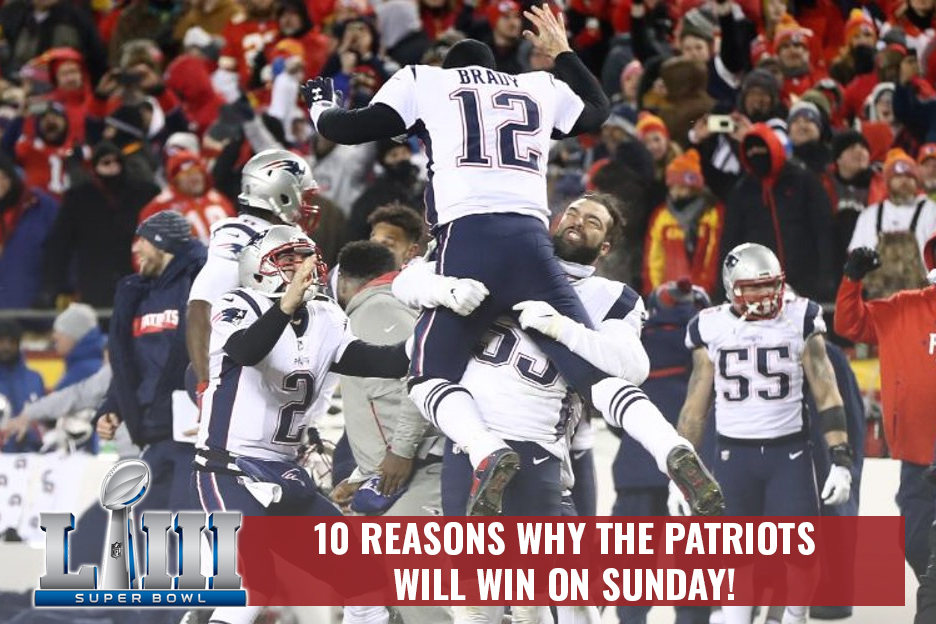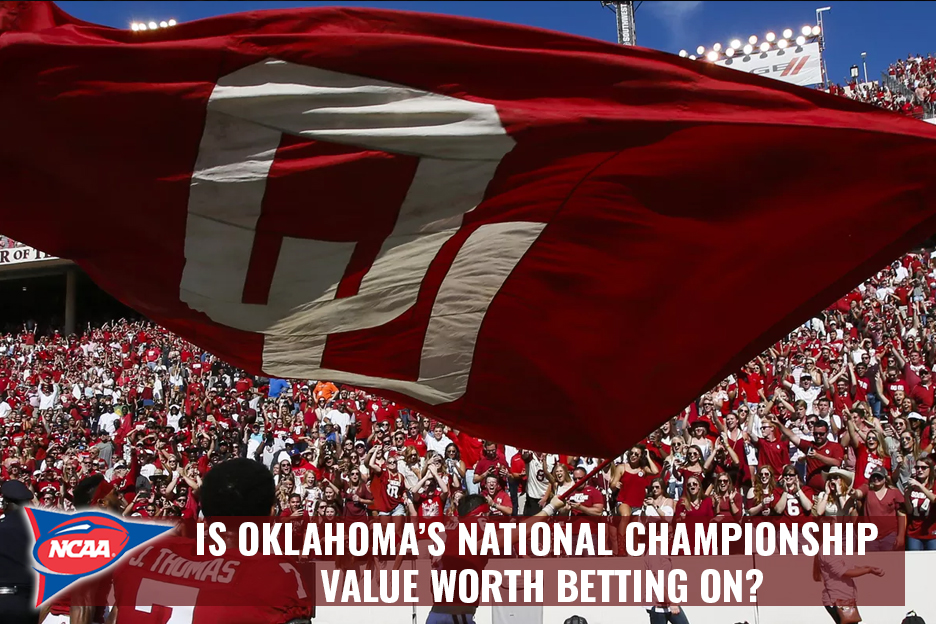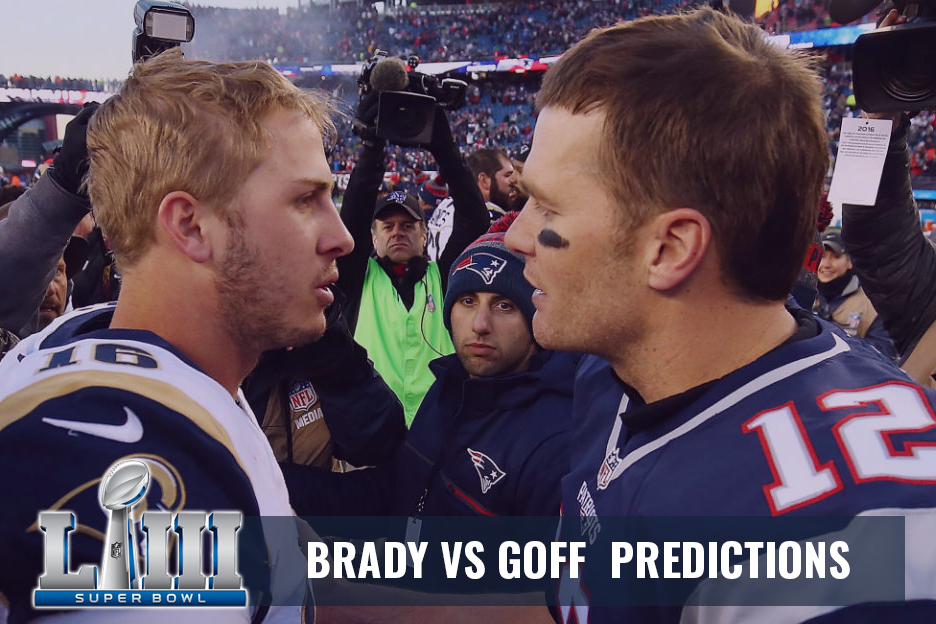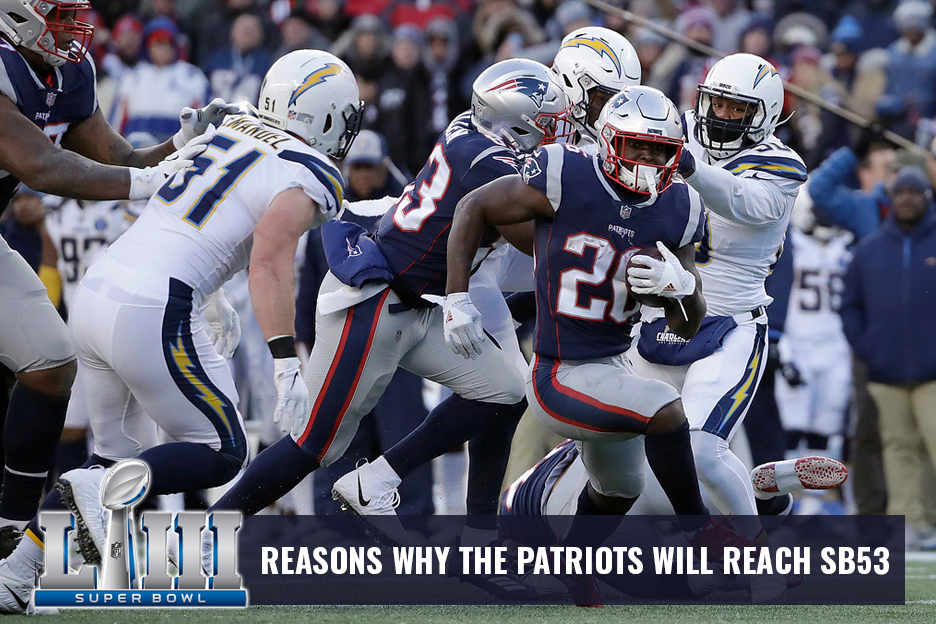

Posted in: NFL
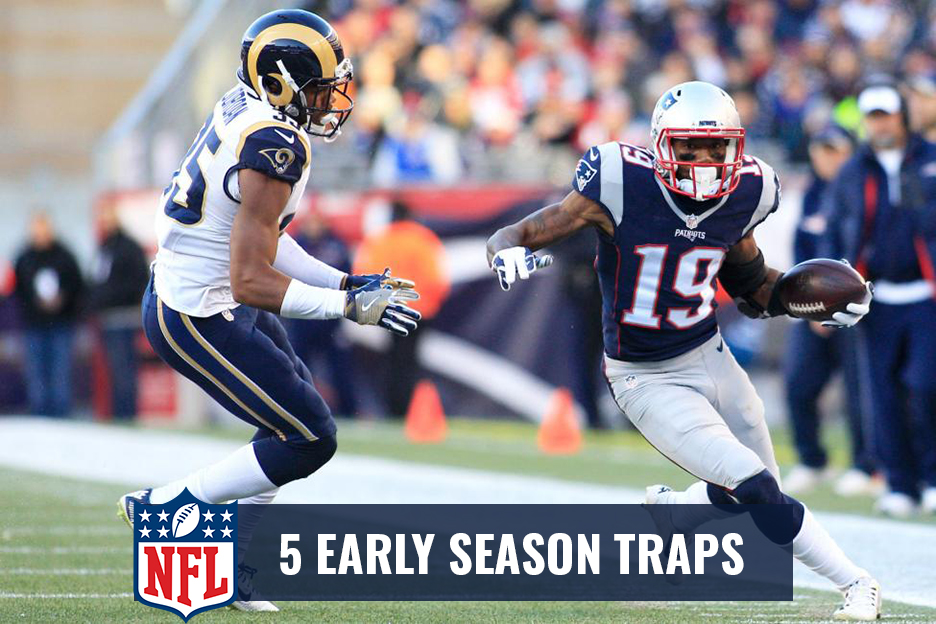
September is almost over, which can only mean one thing for sports bettors worldwide – NFL football is back in full swing.
And with the recent repeal of a federal ban on sports betting – the U.S. Supreme Court ruled to reverse the Professional and Amateur Sports Protection Act (PASPA) of 1992 back in May – individual states are now free to legalize and regulate sportsbooks a la Nevada. As of September 7th, four states have obliged by launching legal sportsbooks – Delaware, New Jersey, Mississippi, and West Virginia – bringing millions of new football bettors into the fold.
With a massive influx of inexperienced bettors heading to their local bet shops – both brick and mortar and online – the bookies are practically salivating at the prospect of “dead money.” These are the hopeful fans who plunk $100 down on the Cleveland Browns or Buffalo Bills to win Super Bowl 53 – despite odds as high as 200 to 1 – or the rookies who don’t know just how important the “hook” can be between (-3) and (-3.5) point spreads.
Sportsbooks survive by taking advantage of uninformed bettors, and while that’s certainly all part of the gambling business, it doesn’t mean you have to be dead money this season.
To help you keep more of your sports betting bucks in your bankroll, and out of the bookies’ hands, check out the following five tips to help NFL bettors avoid early season traps.
The first few weeks of the NFL season are rife with unpredictability, and anybody who professes to know how the opening games will turn out is either delusional or deceitful.
Even if you’re a serious football fan who follows all of the action week in and week out, assessing a given team’s prospects for Weeks 1 through 4 can be a veritable crapshoot.
For one thing, the inevitable roster churn that defines the modern NFL ensures that the 2018 version of a team will be quite different than its predecessor. Outside of the dynasties built by the New England Patriots, Pittsburgh Steelers – and until this year at least, the Seattle Seahawks – continuity isn’t exactly a hot commodity in today’s NFL.
That’s why relying on last year’s standings to guide your early season betting is a big mistake.
It can all too easy to simply pull up last year’s NFL standings as a way of gauging this year’s schedule. As the thinking goes, a team that topped the division or made a deep playoff run last year should be poised to repeat that performance.
But the NFL isn’t like the NBA, where a few top-loaded teams dominate year in and year out. A hard salary cap ensures player movement is a major focus each and every offseason, and for some teams, half of the 53-man roster can turn over from one season to the next.
To get an idea of why using last year’s standings as a guide is a fool’s errand, take a look at the table below, which illustrates how teams progressed from 2016 to 2017:
| 2016 | W | L | 2017 | W | L | Win Differential |
| New England Patriots | 14 | 2 | 13 | 3 | (-1) | |
| Miami Dolphins | 10 | 6 | 6 | 10 | (-4) | |
| Buffalo Bills | 7 | 9 | 9 | 7 | (+2) | |
| New York Jets | 5 | 11 | 5 | 11 | (EVEN) |
| 2016 | W | L | 2017 | W | L | Win Differential |
| Pittsburgh Steelers | 11 | 5 | 13 | 3 | (+2) | |
| Baltimore Ravens | 8 | 8 | 9 | 7 | (+1) | |
| Cincinnati Bengals | 6 | 9 | 7 | 9 | (+1) | |
| Cleveland Browns | 1 | 15 | 0 | 16 | (-1) |
| 2016 | W | L | 2017 | W | L | Win Differential |
| Houston Texans | 9 | 7 | 4 | 12 | (-5) | |
| Tennessee Titans | 9 | 7 | 9 | 7 | (EVEN) | |
| Indianapolis Colts | 8 | 8 | 4 | 12 | (-4) | |
| Jacksonville Jaguars | 3 | 13 | 10 | 6 | (+7) |
| 2016 | W | L | 2017 | W | L | Win Differential |
| Kansas City Chiefs | 12 | 4 | 10 | 6 | (-2) | |
| Oakland Raiders | 12 | 4 | 6 | 10 | (-6) | |
| Denver Broncos | 9 | 7 | 5 | 11 | (-4) | |
| San Diego Chargers | 5 | 11 | 9 | 7 | (+4) |
| 2016 | W | L | 2017 | W | L | Win Differential |
| Dallas Cowboys | 13 | 3 | 9 | 7 | (-4) | |
| New York Giants | 11 | 5 | 3 | 13 | (-8) | |
| Washington Redskins | 8 | 7 | 7 | 9 | (-1) | |
| Philadelphia Eagles | 7 | 9 | 13 | 3 | (+6) |
| 2016 | W | L | 2017 | W | L | Win Differential |
| Green Bay Packers | 10 | 6 | 13 | 3 | (+3) | |
| Detroit Lions | 9 | 7 | 9 | 7 | (EVEN) | |
| Minnesota Vikings | 8 | 8 | 13 | 3 | (+5) | |
| Chicago Bears | 3 | 13 | 5 | 11 | (+2) |
| 2016 | W | L | 2017 | W | L | Win Differential |
| Atlanta Falcons | 11 | 5 | 10 | 6 | (-1) | |
| Tampa Bay Buccaneers | 9 | 7 | 5 | 11 | (-4) | |
| New Orleans Saints | 7 | 9 | 11 | 5 | (+4) | |
| Carolina Panthers | 6 | 10 | 11 | 5 | (+5) |
| 2016 | W | L | 2017 | W | L | Win Differential |
| Seattle Seahawks | 10 | 5 | 9 | 7 | (-1) | |
| Arizona Cardinals | 7 | 8 | 8 | 8 | (+1) | |
| Los Angeles Rams | 4 | 12 | 11 | 5 | (+7) | |
| San Francisco 49ers | 2 | 14 | 6 | 10 | (+4) |
As you can see, success or failure in 2016 didn’t necessarily translate the same way one year later.
Sure enough, those aforementioned dynasty teams largely carried sterling records from 2016 to 2017, so the Patriots and Steelers were division winners each time out.
But take a closer look at the right-most column, and you’ll discover the real secret to NFL early season betting – chaos reigns supreme.
Of the 32 teams in the league, exactly half experienced an increase or reduction of at least four games from 2016 to 2017. Put another way, 16 teams saw their win totals climb or fall by four games or more.
And five teams made even larger jumps one way or another, adding to or subtracting from their 2016 win totals by 6 or more games in 2017.
If you were betting ahead of Week 1 last year, while looking up the 2016 standings, the Los Angeles Rams probably looked like an easy lay-up. After all, the moribund franchise had missed the playoffs for 12 straight seasons, and L.A. was fresh off of yet another disappointing 4-12 season.
But lo and behold, with new head coach Sean McVay taking the reins, and second-year quarterback Jared Goff making the leap, the new look Rams stormed out to an 11-5 record and the NFC West title.
Ditto for the Jacksonville Jaguars, a historical doormat that went 3-13 in 2016, only to add a whopping 7 wins to their total one season later en route to the AFC South crown.
Conversely, the New York Giants looked great while going 11-5 in 2016, only to stumble badly last season with a disastrous 3-13 run.
As these turnaround stories suggest, nothing is a given in today’s NFL, and fortunes can vary drastically from season to the next.
For bettors attempting to navigate the wilds of the early season, steering clear of old standings is the best route to take. Instead of relying on outdated data, spend your research time analyzing this year’s roster movement, head coaching and coordinator shuffling, injury news, and other variables that directly connect to 2018 performance.
One of the points of distinction between “sharp” bettors – the skilled players who consistently squeeze a profit out of the sportsbook – and the “squares” who lose over the long-term concerns the ability to back underdogs.
For the most part, inexperienced bettors lean toward the favorite at all cost. By assessing the point spread, these bettors think they can instantly determine which team is better than its opponent. And if one side is 6 or 7 points better according to the spread, it only seems natural to back the more talented team with your wager… right?
In a perfect world, that’s certainly how sports betting would work – but that wouldn’t be much fun at all. The whole point of wagering on NFL games, or any sport for that matter, is to figure out on your own which team actually holds a higher probability of winning. If the point spread provided an infallible guide to each team’s potential performance, there wouldn’t be any point to betting in the first place.
Indeed, point spreads aren’t designed to indicate the skill gap between one team and another. Sportsbooks use the spread to balance out their own liability, with the number acting as a fulcrum of sorts between the two sides.
When the Patriots play the lowly Jets, it’s obvious Tom Brady and Co. are by far the better team. Without a point spread in place (or a moneyline, but we’ll keep this short and sweet), bettors would simply flock to the Pats and pound the books with an easy win.
But by adding a point spread of (+9) to the Browns, a sportsbook is able to make betting on Cleveland much more appealing. Sure, they’ll probably still lose the game outright, but with the benefit of 9 free points, Browns backers can still cash winning tickets with a 28-20 or 17-9 score.
Consider this interesting statistical nugget. Over the last 3,220 games preceding the 2016 NFL regular season, favorites compiled a 1,596-1,624 record against the spread (ATS).
That’s right, you read the numbers correctly… favorites in the NFL don’t even have a .500 record when trying to cover the spread. It’s not a statistical anomaly either, as 3,220 games represents over 6 seasons’ worth of NFL action.
And as a bettor, had you wagered $100 on every point spread favorite over that span, you’d be running a loss of nearly $10,000.
Clearly then, relying on the (-X) side of a point spread as your only guide is a recipe for sportsbook disaster. Favorites can surely be profitable, don’t get me wrong there, they just shouldn’t be viewed as a default selection.
In fact, given the numbers above, you’d stand to benefit – if only slightly – from backing underdogs by default instead.
But default shouldn’t be in any bettor’s vocabulary, so it’s best to assess each individual game on its own merits before deciding which side of the spread you favor.
Ask any random bettor for advice on an NFL Sunday and you’re bound to hear one common refrain above all others – bet on the home dog.
Among NFL circles, the belief in betting of the home underdog is extremely pervasive, and it actually stems from concrete data that suggests home teams that aren’t favored tend to compete surprisingly well.
Check out the table below to see how various sides fared in NFL point spread betting during a 25-year sample size:
| SIDE | WIN | LOSS | PUSH | EXP. RET. (-110) |
| All favorite | 47.19 percent | 50.05 percent | 2.76 percent | -7.15 percent |
| All underdogs | 50.05 percent | 47.19 percent | 2.76 percent | -1.69 percent |
| All visiting | 48.71 percent | 48.57 percent | 2.72 percent | -4.29 percent |
| All home | 48.57 percent | 48.71 percent | 2.72 percent | -4.56 percent |
| Home favorite | 47.56 percent | 49.75 percent | 2.70 percent | -6.51 percent |
| Visiting underdog | 49.75 percent | 47.56 percent | 2.70 percent | -2.33 percent |
| Home underdog | 50.70 percent | 46.39 percent | 2.91 percent | -0.30 percent |
| Visiting favorite | 46.39 percent | 50.7 percent | 2.91 percent | -8.53 percent |
As the data illustrates – confirming the underdog trends mentioned in the preceding section – all underdogs cover at a slightly better than 50/50 rate. But when an underdog enjoys home field advantage, they cover at a 50.70 percent clip. That may not seem like much, but it’s the highest cover rate of any point spread bet type, and at nearly a full percentage point above .500, it’s significant in statistical terms.
In the 2015 regular season, these numbers bore out nearly to a tee, with home dogs compiling a 45-42 record – good for a 51.7 percent cover rate. Over the last decade, home dogs covered at a 50.8 percent rate, and the percentage dips to 49.8 when judged over the last 12 years.
However you slice the statistical pie, home dogs will cover the point spread essentially half the time. That’s not bad at all when it comes to the topsy-turvy world of NFL wagering, but when you consider the blind devotion many bettors pay to home dogs, it’s nothing to write home about.
If you’re keen on backing a stable of home dogs through the first few weeks of the season, just remember the numbers shown above, which clearly demonstrate the strategy to be breakeven at best.
The notion of “key numbers” in NFL betting is typically associated with the point spread.
For spread bettors, the NFL scoring system’s emphasis on 3 points for a field goal and 7 points for a touchdown create key numbers that tend to crop up. For instance, you’ll see a disproportionate amount of final scores read 17-10, 28-21, or 10-3 to create a spread of exactly 7 points, and the same rule applies to 3-point deficits.
For this reason, bettors who like the underdog love to get a (+7.5) spread in their favor, while a (+6.5) spread may be passed on altogether. Similarly, a favorite bettor would pass on (-3.5), knowing a last-second tiebreaking field goal in their favor wouldn’t be enough to cover that extra half-point.
You should obviously be very mindful of key numbers when betting on NFL point spreads, but they also serve a role for game total bettors.
A wager on the game total doesn’t concern itself with winners and losers, only how many points light up the scoreboard. When you see a game total of 45, for example, you can either bet on the Over or Under for the combined score of the game. If the final reads 24-20, for a total of 44, Over bettors would lose and Under backers would win. Add a safety to the winner’s score for a 26-20 finish, however, and the Over tickets would cash while Under tickets would be torn up.
Betting on game totals can be surprisingly entertaining, because even when the game is a boring blowout, every play down the stretch truly matters. Late scores allowed in blowout game’s “garbage time” may not matter to spread bettors, but these last-minute swings can turn a game total ticket upside down.
Fortunately for total bettors, a few key scores seem to crop up more often than any other over the course of a season, as you can see in the table below:
| Points | Games | Percentage | Games (Last 5 Years) | Percentage (Last 5 Years) |
| 41 | 182 | 4.03 percent | 46 | 3.45 percent |
| 37 | 176 | 3.90 percent | 42 | 3.15 percent |
| 44 | 170 | 3.77 percent | 55 | 4.12 percent |
| 51 | 162 | 3.59 percent | 45 | 3.37 percent |
| 43 | 159 | 3.52 percent | 51 | 3.82 percent |
| 40 | 145 | 3.21 percent | 42 | 3.15 percent |
| 47 | 143 | 3.17 percent | 48 | 3.60 percent |
| 33 | 139 | 3.08 percent | 39 | 2.92 percent |
| 48 | 131 | 2.90 percent | 38 | 2.85 percent |
| 30 | 126 | 2.79 percent | 36 | 2.70 percent |
| 55 | 121 | 2.68 percent | 39 | 2.92 percent |
| 34 | 117 | 2.59 percent | 39 | 2.92 percent |
| 45 | 115 | 2.55 percent | 30 | 2.25 percent |
| 27 | 112 | 2.48 percent | 25 | 1.87 percent |
| 38 | 102 | 2.26 percent | 26 | 1.95 percent |
| 23 | 102 | 2.26 percent | 17 | 1.27 percent |
| 50 | 99 | 2.19 percent | 40 | 3.00 percent |
| 36 | 99 | 2.19 percent | 37 | 2.77 percent |
| 52 | 96 | 2.13 percent | 31 | 2.32 percent |
| 54 | 90 | 1.99 percent | 32 | 2.40 percent |
| 31 | 88 | 1.95 percent | 16 | 1.20 percent |
| 39 | 84 | 1.86 percent | 33 | 2.47 percent |
| 29 | 82 | 1.82 percent | 16 | 1.20 percent |
| 46 | 80 | 1.77 percent | 30 | 2.25 percent |
As you can see, the most common final score total in the NFL is 41, which occurred in 4.03 percent of games over the last 18 seasons.
Next up are 37 and 44, at 3.90 percent and 3.77 percent, respectively. Clearly then, game total bettors are well served to stick with totals that sit between 37 and 44, with 41 standing out as the most key number of them all.
This tip doesn’t need any data or tables to back it up – it’s just common sense.
You may be a faithful fan of the Tampa Bay Buccaneers since the schoolyard days, but backing them to beat good teams in 2018 is an easy way to burn through your bankroll.
The best NFL handicappers think with their heads, not their hearts. It’s fine to have a favorite team, and cheering for them to beat the odds is what makes football fandom so much fun. But when it comes to cashing tickets, there’s no room for sentimentality at the sportsbooks.
Just because you wear their colors and don their jerseys every Sunday doesn’t mean your team is worth a wager.
If betting on your own team has been a bugaboo in the past, simply set a personal rule that prohibits you from doing so. Trust me, you’ll enjoy your own team’s season much more without money clouding the fun, and your bankroll will receive a natural boost to boot.
Beating the sportsbook is always challenging, but if you can avoid these 5 early season NFL betting traps you can improve your chances. Remember the NFL season is 17 weeks, plus the playoffs, so you have plenty of betting opportunities throughout the season.
